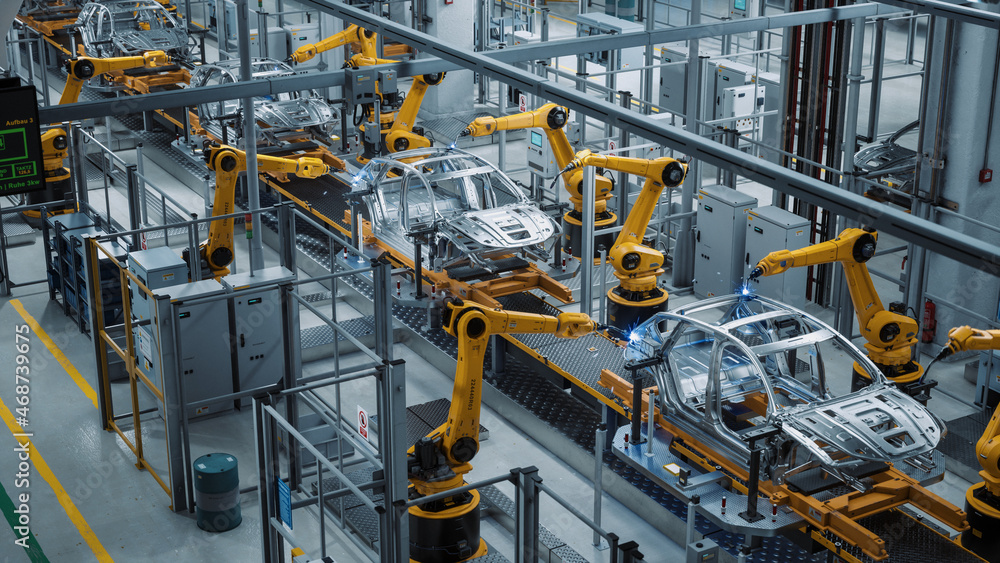Automotive Sequencing 101: Why is parts sequencing important?
Parts sequencing is a critical process in modern automotive manufacturing. While there are numerous reasons sequencing has become a standard practice for most automotive OEMs (original equipment manufacturers) and their suppliers, it can be broken down into two main categories: lean manufacturing and part traceability.
Lean Manufacturing
In any industry finding ways to successfully reduce costs is necessary. For automotive manufacturers and OEMs this can be found through the concept of lean manufacturing. Originating from the Japanese industry, lean manufacturing promotes the idea of reducing waste without sacrificing productivity. Waste is generated not only from physical production, but also in the manufacturing process itself; if a step in the manufacturing process is not adding value, it is creating waste. How then does parts sequencing contribute to this concept?
Parts sequencing is favored by OEMs as it removes the need for standing inventory which can be exceedingly costly. Instead of using valuable warehouse space to keep product on hand, OEMS can receive parts just in time and in sequence when they are needed. This streamlines production, effectively improving productivity while reducing wasted space. Additionally, sequencing allows suppliers to know exactly what parts they need to manufacture or assemble. Having this knowledge before production allows suppliers to reduce material waste by eliminating the need to create unnecessary back stock.
Part Traceability
In addition to lean manufacturing, part sequencing plays a significant role in part traceability which aids in vehicle recalls. The automotive sequencing process requires each part be linked to a specific vehicle identification number (VIN) and in cases of certain commodities, such as tires or airbags, further traceability is required due to safety concerns. Having this link and the associated critical part data allows manufacturers to identify which vehicles have faulty parts by knowing, based on the information gathered during manufacturing, which parts or batch of parts are defective. So how did traceablity come to be required in the automotive industry?
The TREAD Act
In early 2000, the United States National Highway Traffic Safety Administration (NHTSA) began an investigation into a high number of incidents involving Firestone tire failures often associated with accidents of the Ford Explorer. While there was a lot of blame tossed between the two companies, many agree both were at fault. Firestone had tires that were faulty and the Ford Explorer had a higher risk of rollovers. In either case, the failures of both resulted in hundreds of deaths and even more injuries. The resulting fallout not only cost hundreds of lives, but both Ford and Firestone billions of dollars.
Ford and Firestone, were aware of issues prior to the investigation but were not required to report it. However, in late 2000, the United States enacted The Transportation Recall Enhancement, Accountability and Documentation (TREAD) Act. “The TREAD Act stipulates that manufacturers must keep and report to the National Highway Traffic Safety Administration all relevant data related to the safety or recall of their products.”
So, what did the TREAD Act mean to automotive manufacturers? They would now be required to maintain critical safety data of manufactured parts and report this data if there is a recall. While it may seem straight forward at first, it brought up the issue on how automakers would gather and store all of this information. New cars are made each day from thousands of individual parts; that is a phenomenal amount of data to gather, store, and recall when needed. This issue lead to the continued rise of sequential parts delivery software that can manage vast amount of traceability data.
Parts Sequencing Now
Sequential Parts Delivery has become a common and standard practice for many automotive manufacturers creating parts that require traceability. Not only does this help streamline production but assists in vehicle recalls in the event parts are found to be faulty. As automotive manufacturing continues to evolve, sequencing will become even more critical as EV and AI technology is further integrated into vehicles.
Insequence Corporation
Insequence is a leading provider of sequencing and manufacturing software solutions. Easily tailored to individual facilities, their software’s modular design can fulfill requirements no matter the size or complexity of the system. This results in a standard sequencing system, SPD Pro that is more complete and more capable than any other solution. In addition to just-in-sequence (JIS), Insequence provides MES, Inventory Management, and SCADA solutions.
With experience throughout the Americans and Europe, plus dozens standard automotive OEM interfaces and 24 x 7 x 365 customer support, Insequence is at the forefront of supply chain software solution providers. As a result, they still work with their original customer from 1996.
GO WITH THE PRO.
GO WITH INSEQUENCE.
The Company That Pioneered End-to-End Manufacturing.









